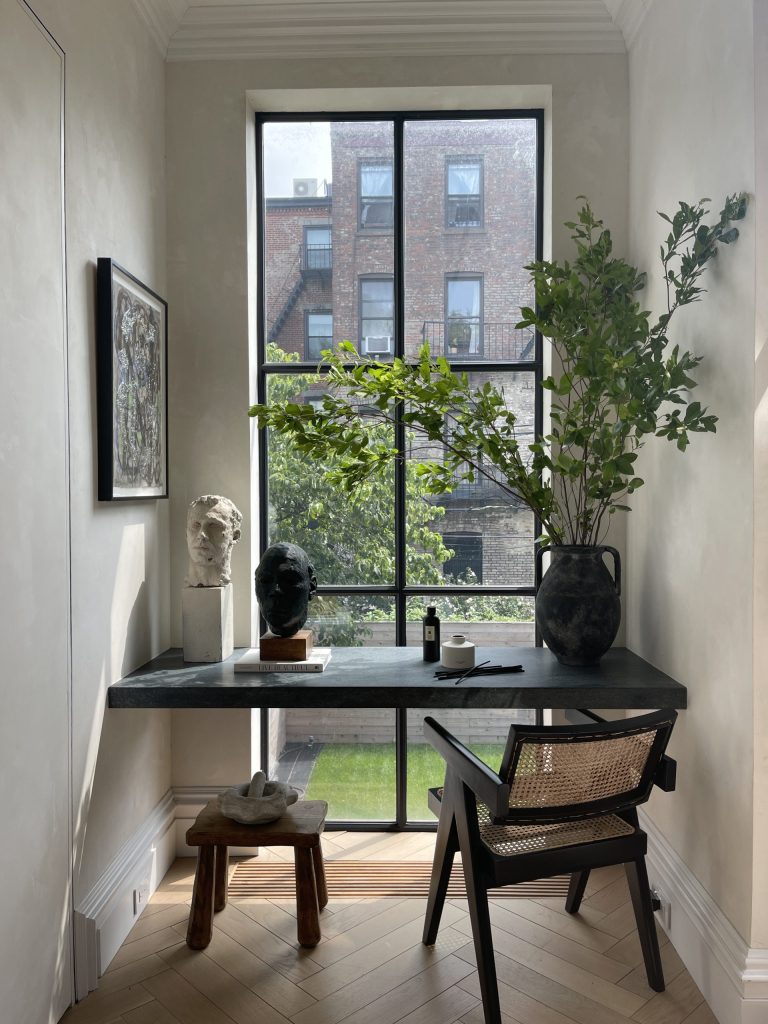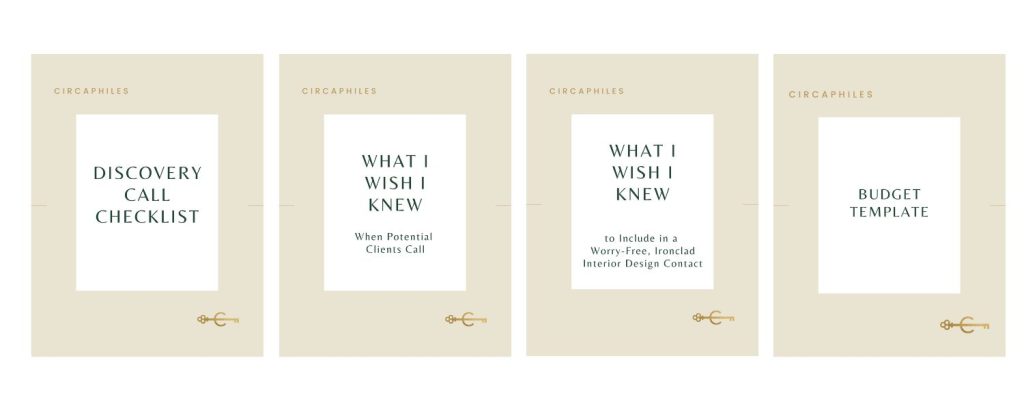When diving into an exhilarating new project, the last thing you want is to be unprepared, scrambling to get it together. As designers and business owners, a million priorities run through our minds, from achieving big career goals to that lampshade trim that didn’t arrive at your workroom yet. One of the keys to being a successful interior designer is having a clear plan and the logistical wherewithal to execute that plan. I know from experience how vital it is to lead with a solid first impression AND what powerful assets back it up. I’ve gathered the top 5 essential documents from the Circaphiles library to ease your stress, enhance your productivity and let your project flow. Don’t start your next project without them!
The 5 Essential Client Documents You Need Before Starting Your Next Project


interior design by athena calderone; photography by nicole franzen
1. Discovery Call Checklist
Oftentimes, we find ourselves so caught up in figuring everything out on our own, that we begin to lose sight of the things we can be doing that really matter – like garnering the right clients. This Checklist offers you a solution. You can quickly grab it when a potential client calls, focus the conversation and gracefully ask succinct questions to determine if you may be a good fit…or if you need to run for the hills!
ACCESS the Circaphiles Checklist and make your client interview a breeze.
2. Initial Consultation Questionnaire
After speaking to a new client on the phone and upon meeting them for the first time in person, it’s imperative to ask specific, insightful questions to dig out the details and better see the direction of this project. If their responses consist of a lot of “I don’t know”, that may mean you’re headed for months of indecision resulting in gaps in your cash flow. If their responses are quick and firm, they’ve given you a glass of water and asked about you personally, then it looks like you’re in for years of a joyous relationship with respect and understanding.
ACCESS the Circaphiles Expert Guide and relish in this newfound confidence.
3. Interior Design Contract
Creating a solid contract is one of the tasks that designers often shy away from. We know it’s important, but our emotions – fear, uncertainty, perfectionism – hold us back. Enter, Circaphiles “What I Wish I Knew – to Include in a Worry-Free, Ironclad Interior Design Contract ” Expert Guide.
Timothy Corrigan, internationally-acclaimed interior designer and Circaphiles ambassador, and I share what we learned the hard way – through experience – so that you can start your first day on your new project knowing that you will get paid on time and that the client is clear about your business model and your fees.
We created this Guide to help you steer that stellar first impression you made towards a strong, effective contract which ensures the lines of communication between you and your client stay open and also protects you and your business from misunderstandings and – we hate to say it – lawsuits. Maybe you’re thinking, “But I already have a contract”. We believe it can always be improved!
ACCESS the Circaphiles Expert Guide to start devising or improve that outdated contract.

4. New Client Welcome Packet
When a new client signs on, a proper welcome is a must! Such a packet will allow you to spell out in layman’s terms what’s next, communication channels and timeline expectations. My version is sometimes sent with the Interior Design Contract when all signs point to “GO”. The small brochure is branded (every page!) and gives insight into our company values, what sets our studio apart, how we can move forward, who we will be for the client and who the client needs to be for us to work best together.
5. INTERIORS Budget
Some designers provide a more “broad strokes” project budget. I issue a completely transparent, line item budget including a high/low net cost range all the way down to third-party freight and time billing. For me, this format eliminates questions during the process and allows us to focus on the fun of designing! After we’ve finalized concepts and preferred quality level, I present the budget alongside furniture plans. The goal is to have pricing approved before I start sourcing actual furnishings.
Why? Reprioritization can occur during the budget approval process as they see how it all adds up. I shouldn’t waste my time (aka the client’s money) pulling Fortuny drapery fabric for a room that I deem more important, but, in fact, the clients want a higher-end look in another room. Our template crystallizes investment levels and will lead you and your client through the entire design process.
ACCESS the Circaphiles Budget Template and save countless hours creating your own.
members, download these complimentary templates and guides in your dashboard.
Not a member yet? Streamline your studio life with the click of a button.

